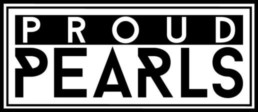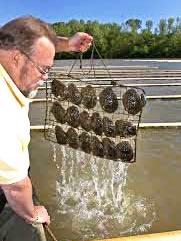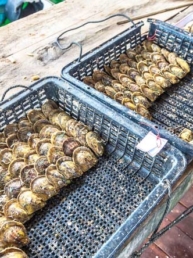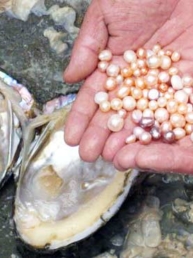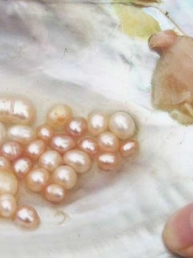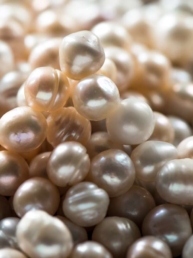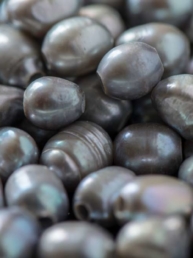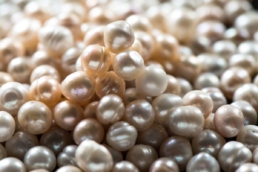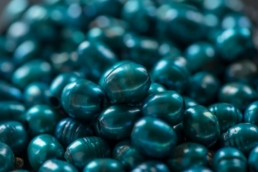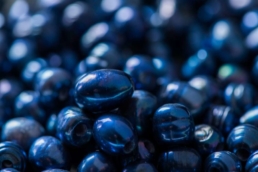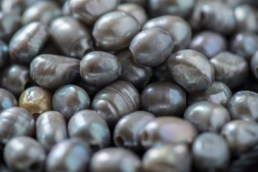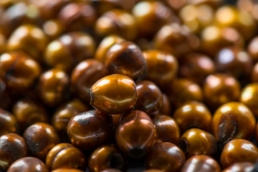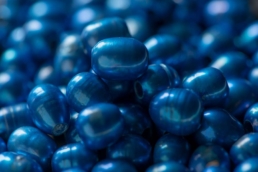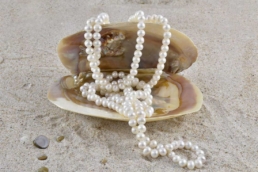Mikimoto
The Japanese Kokichi Mikimoto discovered in 1896 when you put a piece of tissue in a mussel or oyster, it creates a pearl: it creates an irritation which ensures that many layers of pearl are formed around the piece of tissue, ultimately creating pearls we know and love. Mikimoto has worked for many years on a method to grow the perfect pearl. He experimented with different types of mussels and oysters until he finally succeeded. Known as “the king of pearls”, the Mikimoto brand has grown into an exclusive pearl jewellery brand that is highly regarded to this day.

Kokichi Mikimoto in his laboratory
Pearl farms
Pearls are formed in mussels (freshwater pearls) or oysters (sea pearls). Since it is no longer legal to source pearls from the wild, all available pearls are grown by pearl farms. A pearl farm is a lake in which the mussels and oysters grow.
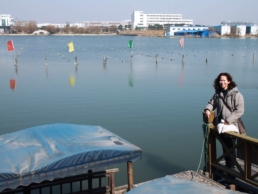
We visit “our” pearl farm every year to ensure that our pearls are of the highest quality.
Circa 1920, the production of cultured pearls started on a large scale and to this day is the method used to grow pearls. The oysters and mussels are “operated on” and a core is implanted. This job requires delicate care because the animal has to survive this procedure. Freshwater pearl mussels are very strong and can grow up to 30 pearls at a time. The saltwater pearl oysters are much more sensitive and only produce one pearl per cycle. The oysters and mussels are clamped between grates and hung in the water in the lakes of the pearl farm.
The cultivation of pearls takes time since the mussels or oysters need to mature. This will take about three years. Then the pearl must grow, this takes at least three years and it can take up to seven years before a sufficiently thick layer of mother-of-pearl is created and a beautiful pearl of high quality is created.
The harvest
The pearls are rinsed and then sorted by colour, size, shape and quality. With rarer pearl types, it can sometimes take a few years before there are enough similar pearls to be able to make a pearl necklace. The sorting process is very precise and is done by specialists.
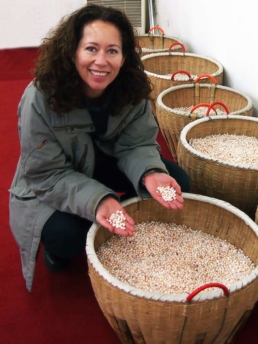
We selecteren zelf de mooiste parels voor in onze collecties
A fair trial
During the breeding season, the shells are cleaned regularly, the algae, parasites and other deposits are carefully removed. The water temperature and the quality of the water are carefully monitored by the growers. Pearl farmers are therefore very conscious of the environment and do everything they can to keep the water in which they grow their pearls as pure as possible. This makes the cultivation of pearls more sustainable than the production of any other gemstone.
Sustainability
The pearl cultivation can be done with minimal waste: the mussels and oysters used for pearl cultivation are not thrown away since they can last for multiple cycles. The shells are then ground and used for road construction, for example, and the meat is used for animal feed and fertiliser. Pearls are the only organic jewellery made by nature itself. The cultivation of pearls has sustainable and social effects on the environment making it a particularly sustainable industry. Mussels and oysters need clean, unpolluted water to produce high-quality pearls. We work with small certified pearl farms which we visit ourselves every year so we can process the most beautiful pearls in our collections.
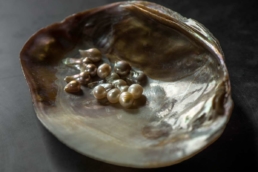
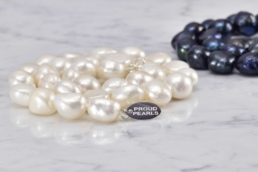


Bron: https://nl.wikipedia.org
